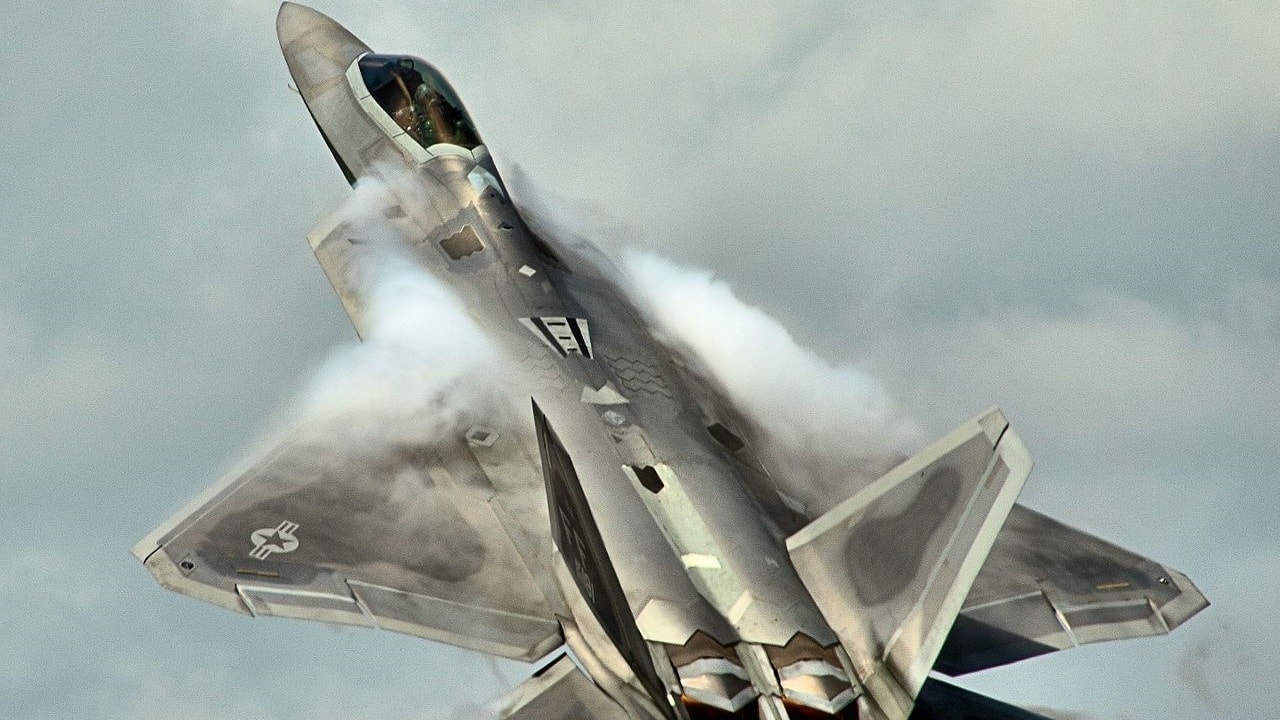Israel wants the Lockheed Martin F-22 Raptor, but they are unlikely ever to procure the fifth-generation fighter.
The U.S. sends more military aid to Israel than to any other country. Washington dispensed over $11 billion in military aid to foreign countries in 2020, and $3.3 billion went to Israel. Only two other countries received more than $1 billion: Afghanistan – a nation the U.S. occupied for two decades – and Egypt.
A Preferred Partner
Israel was not always the primary benefactor of U.S. military aid. In the early 1960s, the U.S. sought to limit foreign arms distribution in the Middle East.
But after the Six-Day War, U.S. policy toward Israel changed significantly. The conflict showed that several Arab states had aligned themselves with the Soviet Union. Washington wanted to balance Soviet power in the Middle East, so the U.S. made a strategic choice to bolster Israel’s military enough to give it a qualitative edge in the region. Accordingly, the U.S. began supplying Israel with “the good stuff,” starting with a 1968 sale of F-4 Phantom II aircraft. The military relationship has continued to deepen ever since, with the United States supplying a steady stream of high-quality weapons to Israel. In fact, today, the relationship is so deeply ingrained in U.S. foreign policy that suggesting America should reduce its aid to Israel is akin to blasphemy – and it is political suicide.
Why the F-22 Is a Hard Sell
It might seem strange, then, that the U.S. never exported its very best fighter jet to Israel – the F-22 Raptor. Although former U.S. President Donald Trump, at least according to press reports, in 2020 approved the sale of F-22s to Israel. These days that looks im the jets have never been delivered – and they likely never will be.
Trump signed off on the sale of F-22s with Israel’s regional military superiority in mind. The U.S. had agreed to supply the United Arab Emirates with the Lockheed Martin F-35 Lightning II, so in theory, Israel, which already operates the F-35, would need a few F-22s to stay ahead. But there are problems that are stopping the sale from going through. First, it is illegal: In 1998, the U.S. Congress voted to explicitly forbid F-22 sales to foreign countries.
“Unlike the vast majority of US military aircraft, the F-22 was never designed to be exported. As such, it was packed with classified technology and produced through advanced production methodologies that the United States would rather keep close to the chest,” Alex Hollings wrote for Sandboxx. The U.S. is especially worried about F-22 technology making its way to China or Russia. Beijing especially has used industrial espionage to gain insight into U.S. aerospace development. China would not have been able to develop their most advanced fighter, the J-20, had they not stolen U.S. technology.
In order to export the F-22 to Israel, Congress would need to pass a law allowing it. Given AIPAC’s influence over Republican and Democratic lawmakers alike, such legislation could indeed pass. Even if it does, however, a bigger obstacle hinders F-22 exports: No one can build the thing.
The U.S. operates a limited number of F-22s. “Only around 130 of the 186 F-22s Lockheed built were ever operational, and today the number of combat-ready F-22s is likely in the double digits, ” Hollings wrote. “It’s extremely unlikely that the U.S. Air Force would be willing to part with any of their own F-22s to fill an Israeli order, so there would be no choice but to build new F-22s to complete such a sale.”
But building the fighters is not so simple. F-22 production ceased in 2009.
“Re-starting the F-22 production line would likely cost the same or potentially even more than simply developing an entirely new and potentially better fighter,” Hollings wrote. “Lockheed Martin cannibalized a great deal of the F-22’s production infrastructure to support the ongoing production of the F-35 meaning it wouldn’t be as simple as just re-opening the plants that had previously built Raptors.”
In 2017, a classified report that detailed the costs of restarting F-22 production was submitted to Congress. Officials said that according to the report, it would cost approximately “$50 billion to procure 194 additional F-22s, at an estimated cost of $206 million to $216 million per aircraft.” One reason the cost runs so high is that Lockheed would be building a modern version of the fighter, rather than the 1990s version currently in service.
“The Air Force has no plans to restart the F-22 production line; it wouldn’t make economic or operational sense to do so,” Air Force spokeswoman Capt. Emily Grabowski said in a 2017 statement.
Trump’s F-22 sale approval was just political theater. Don’t expect Israel to ever receive the F-22.
Harrison Kass is a Senior Defense Editor at 19FortyFive. An attorney, pilot, guitarist, and minor pro hockey player, he joined the US Air Force as a Pilot Trainee but was medically discharged. Harrison has degrees from Lake Forest College, the University of Oregon School of Law, and New York University’s Graduate School of Arts & Sciences. He lives in Oregon and regularly listens to Dokken.
From 19FortyFive

